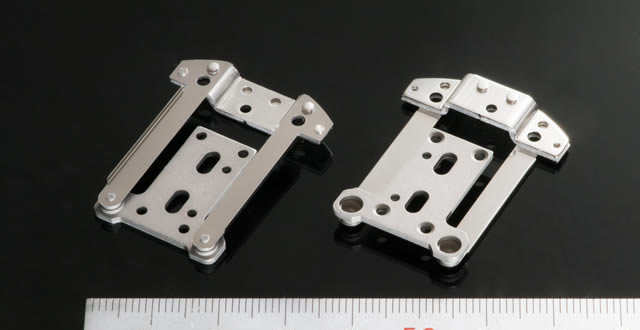To avoid corrosion of stamping components, anti-corrosion treatment must be applied throughout production. For convenience, we have compiled a selection of anti-corrosion treatment techniques for electronics stamping and stretching components.
Epoxy zinc-rich primer is applied to stamping parts for heating, which may strengthen the adherence of epoxy zinc-rich primer and hasten to dry.
The corrosion resistance of the drawn lining may be enhanced by using a mixed mortar lining and a specific coating. For example, in the stamping parts processing sector, there are many metal stamping goods, and precision metal stamping parts have high requirements on the number, particularly for electronic devices. In addition, companies that produce precise metal stamping components for electronics must adhere to stringent quality control measures. In addition, electronic stamping components must also meet stringent requirements for form and dimensional precision.
First, the bending surface’s form must be as symmetrical as feasible, and the minimum bending radius must not exceed the material’s minimum permitted value.
If you need to bend a component with holes, be careful not to distort the holes.
Metal stampings should have a straightforward design with shallow depth to speed up design and forming processes.
Metal stamping components need careful processing of the chamfer radius because otherwise, the number of drawing cycles and dies increases, and the parts are more prone to spreading. The discharge force determines whether the metal stamping die will accept an elastic discharge plate or a fixed discharge plate, with the material thickness being the primary factor. The discharge force of the elastic discharge plate is substantially enhanced when the elasticity of elastic components (such as rectangular springs) utilized in the die increases. The present scenario dictates that the elastic unloading plate be utilized when the thickness of the material is 2mm or less. Therefore, unloading plates should be permanently installed once the material thickness exceeds 2mm. The material must be at least 1mm thick when using an elastic discharge plate to pass through the die.
Coatings made of epoxy resin asphalt cement are a component coating with excellent adherence and a silky smooth finish. Its limited utility stems from the complexity of its production process. When applied to stamping and stretching components inside, either an aluminate cement coating or a potassium thiocyanate concrete coating may reduce the risk of corrosion and increase durability.
Coatings made from polyurethane material are an emerging green special coating with desirable properties, including excellent resistance to wear and corrosion.
Hashimoto Precision produces metal stampings. Metal stamping components are well-liked because of their adaptability and tight tolerances. Get in touch if you’re curious!
 Jobsearchdone.com Top News Share Website
Jobsearchdone.com Top News Share Website




